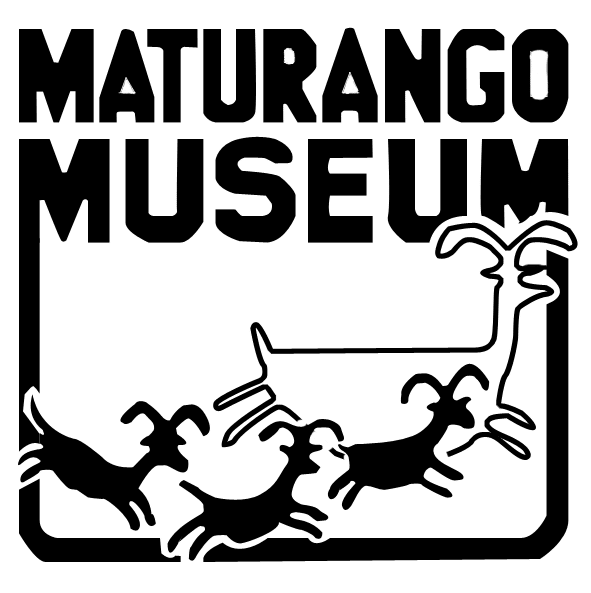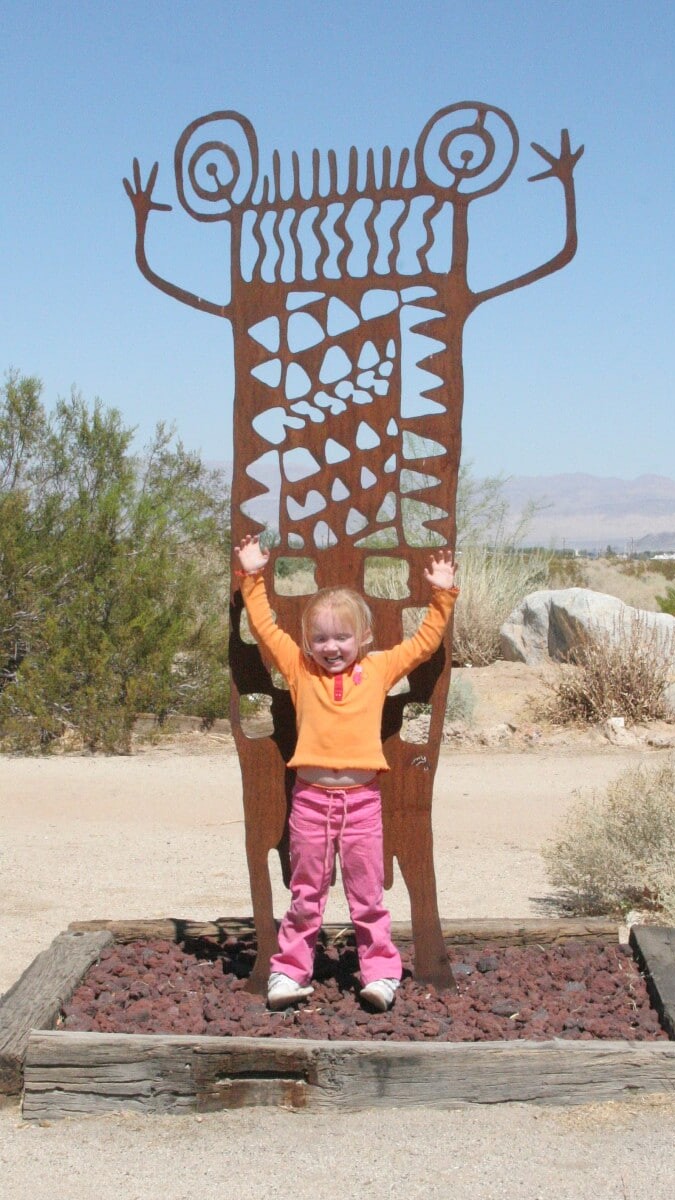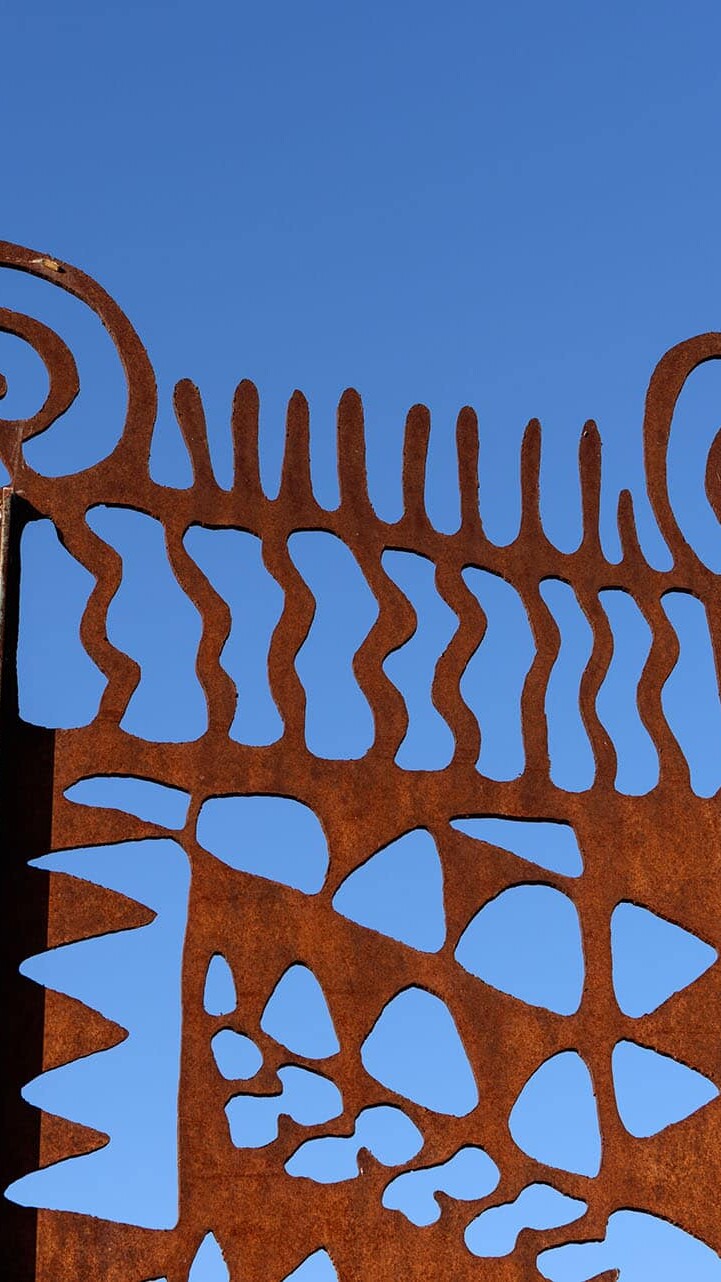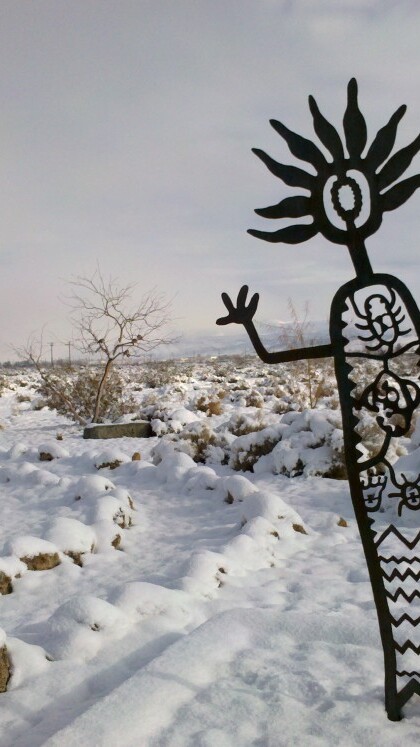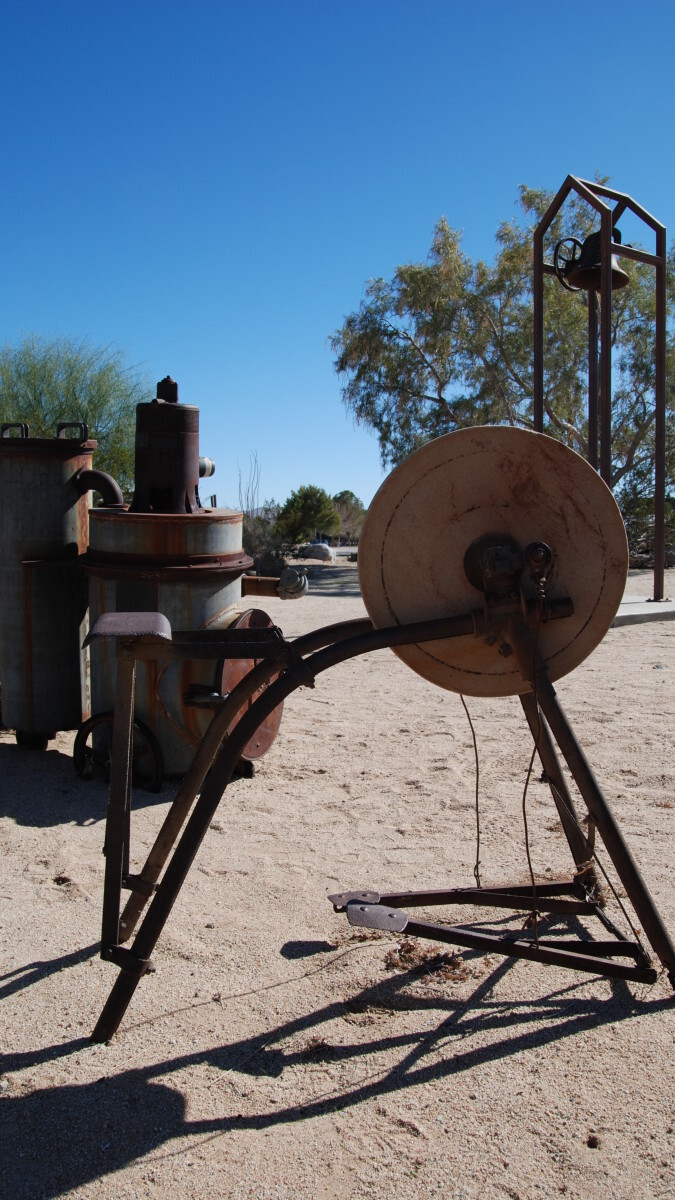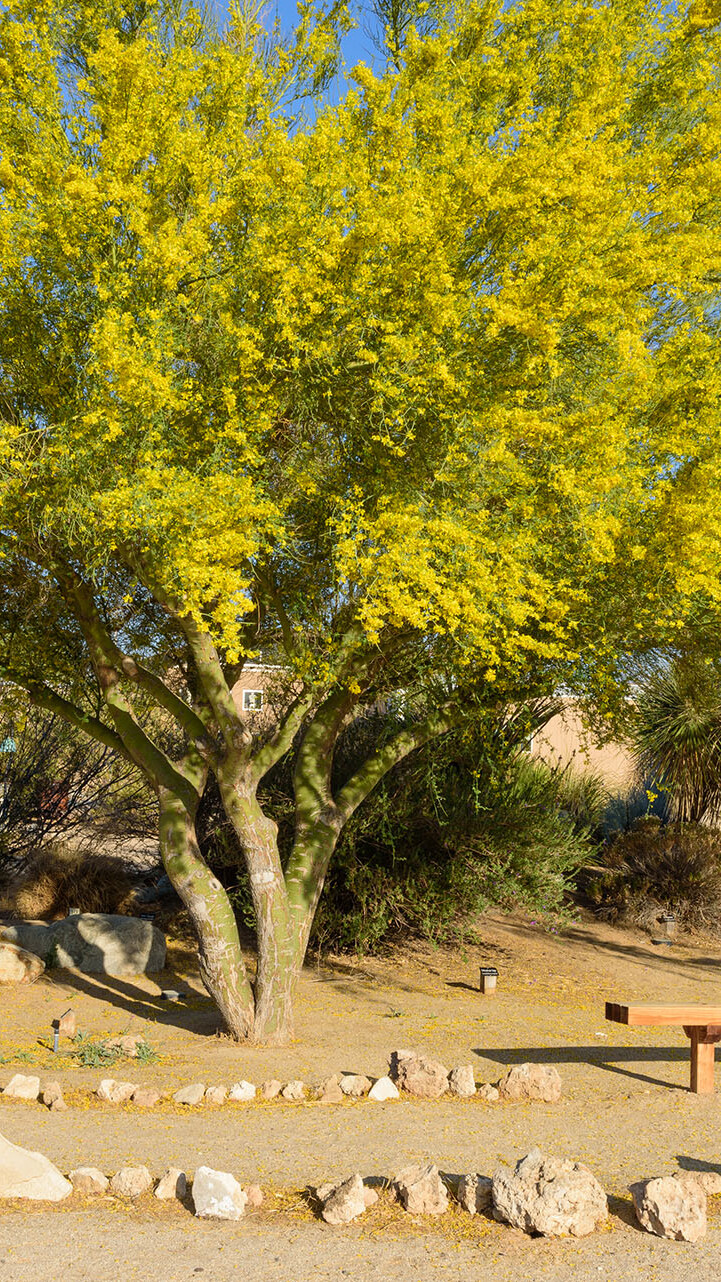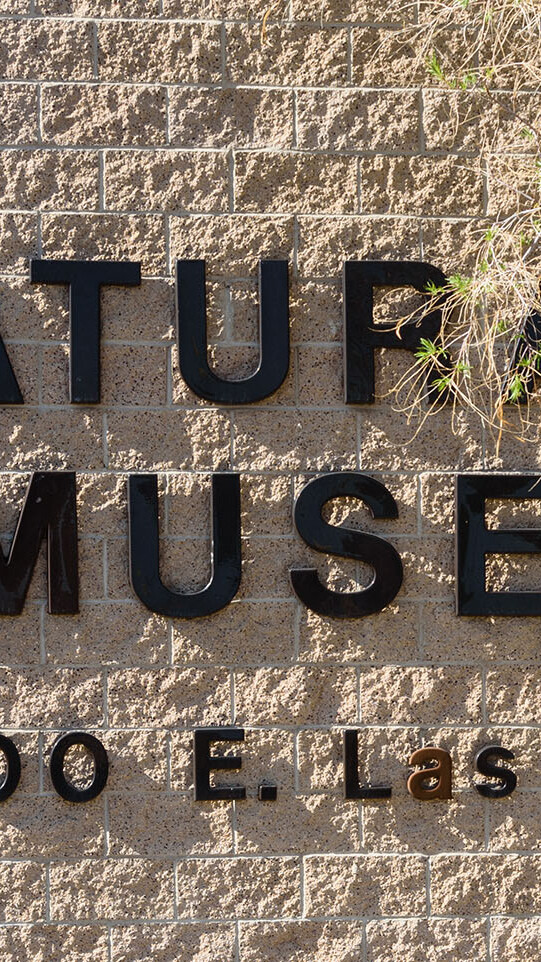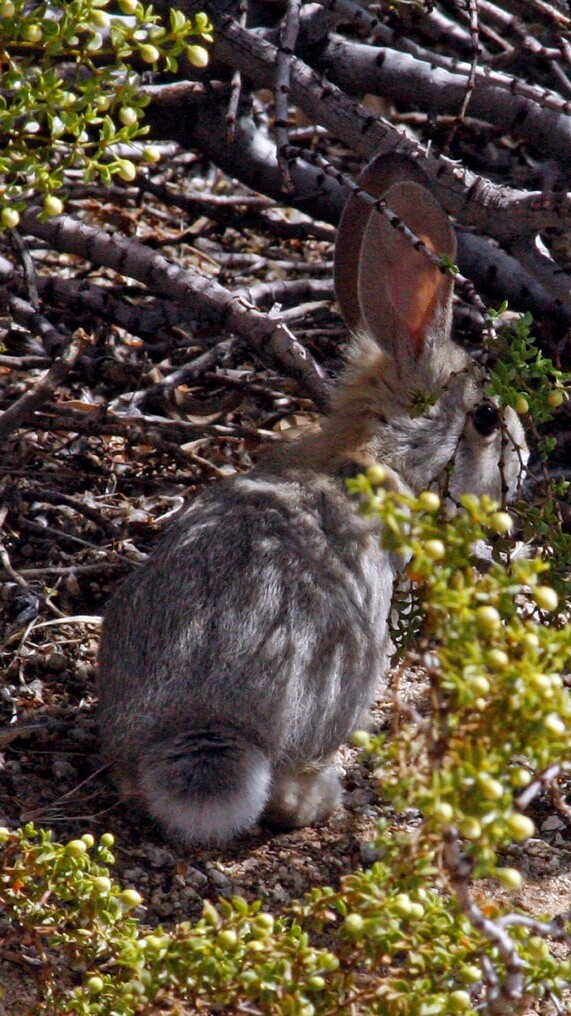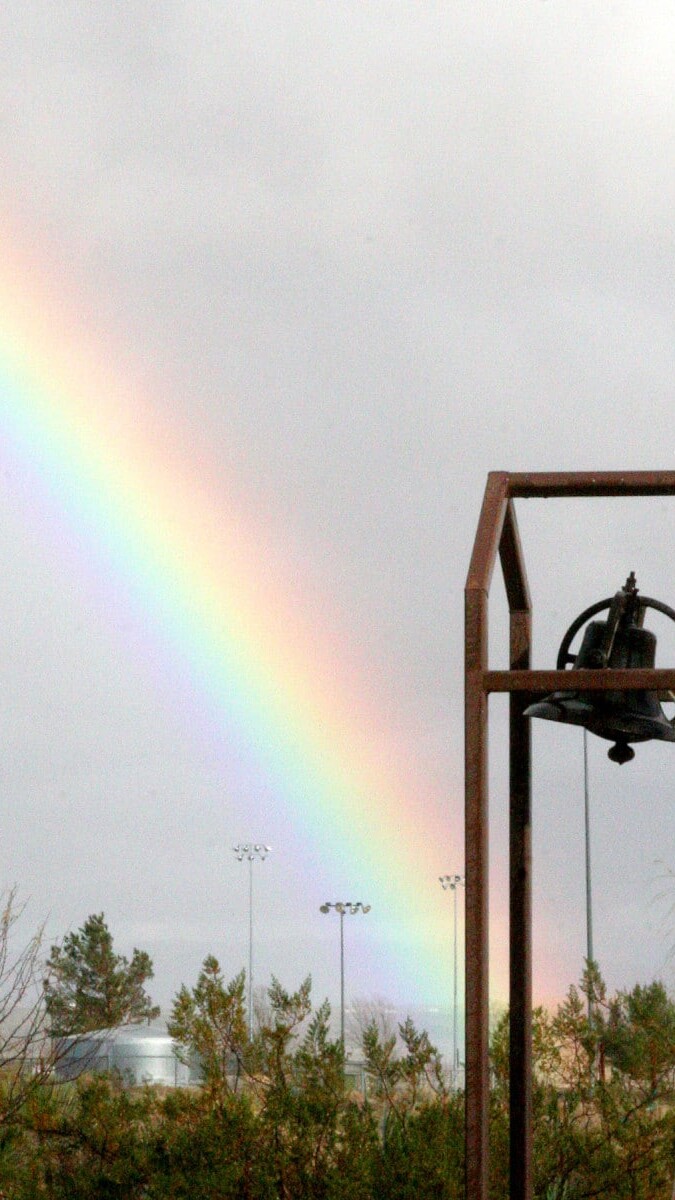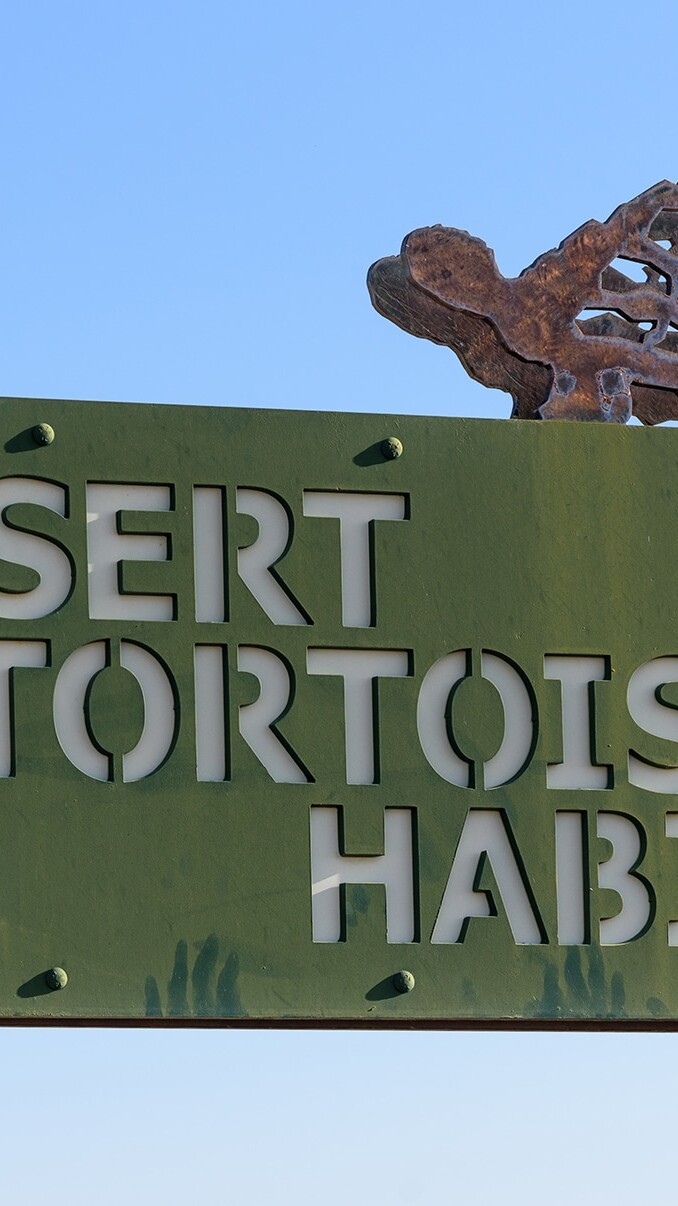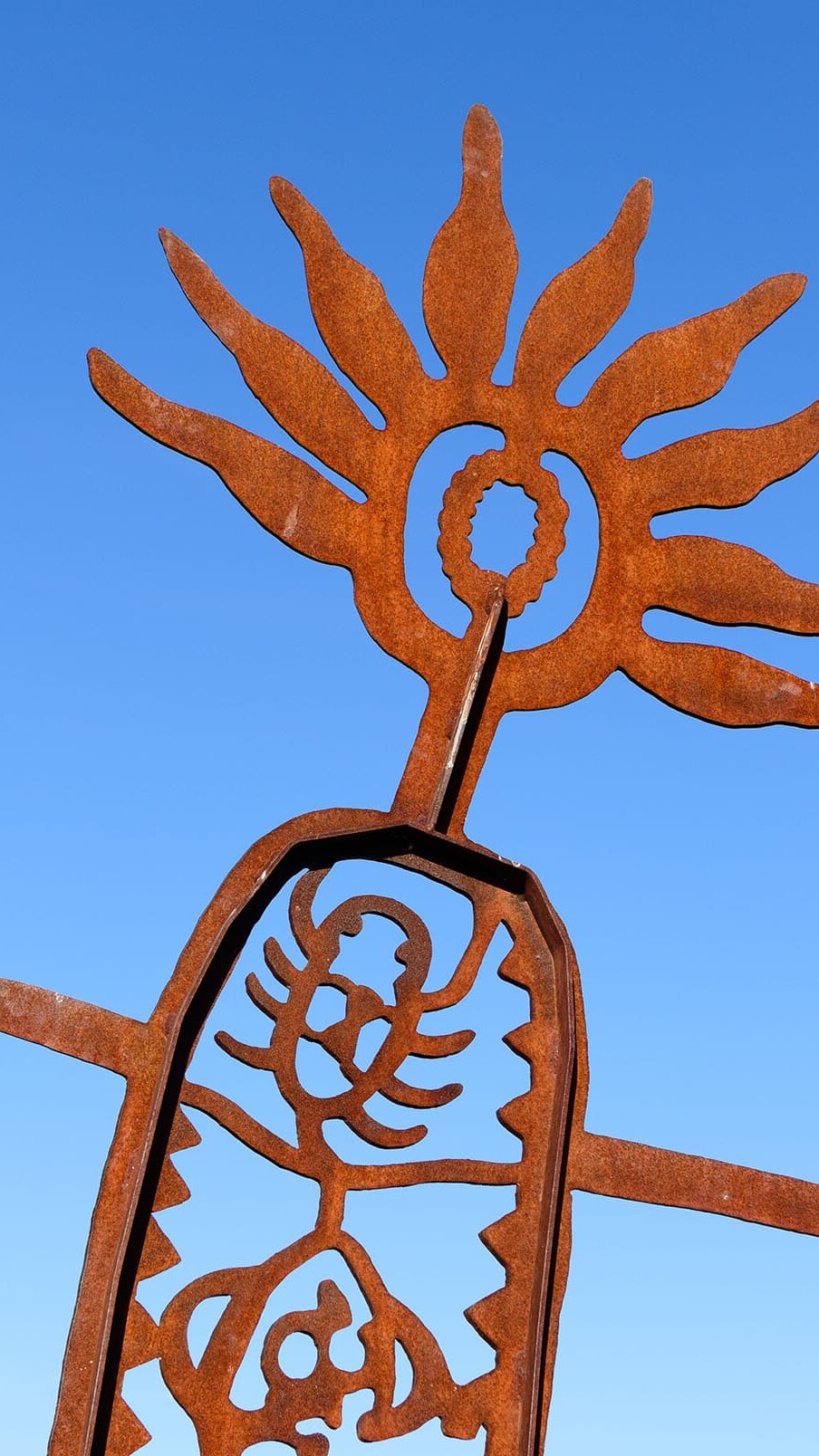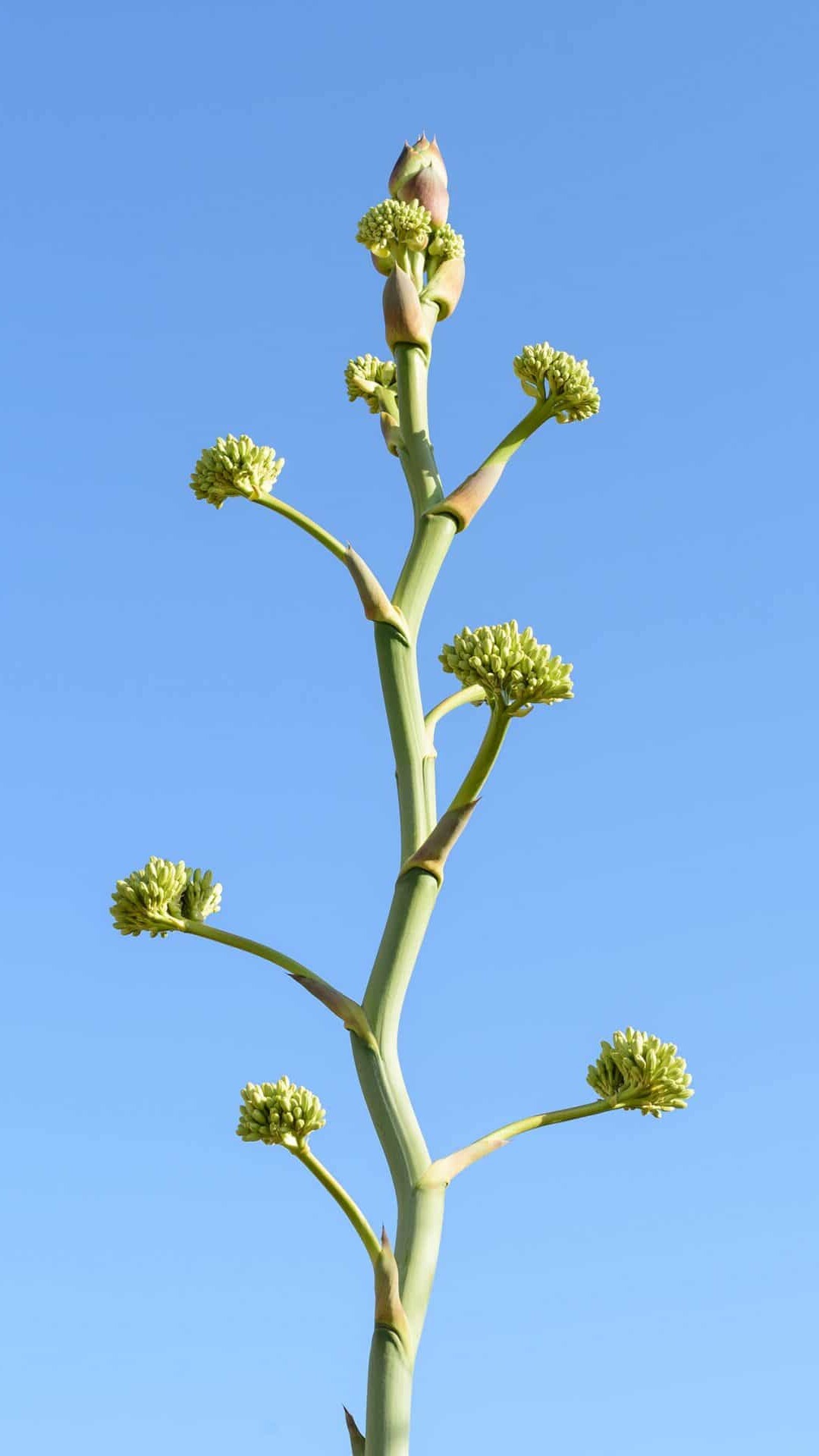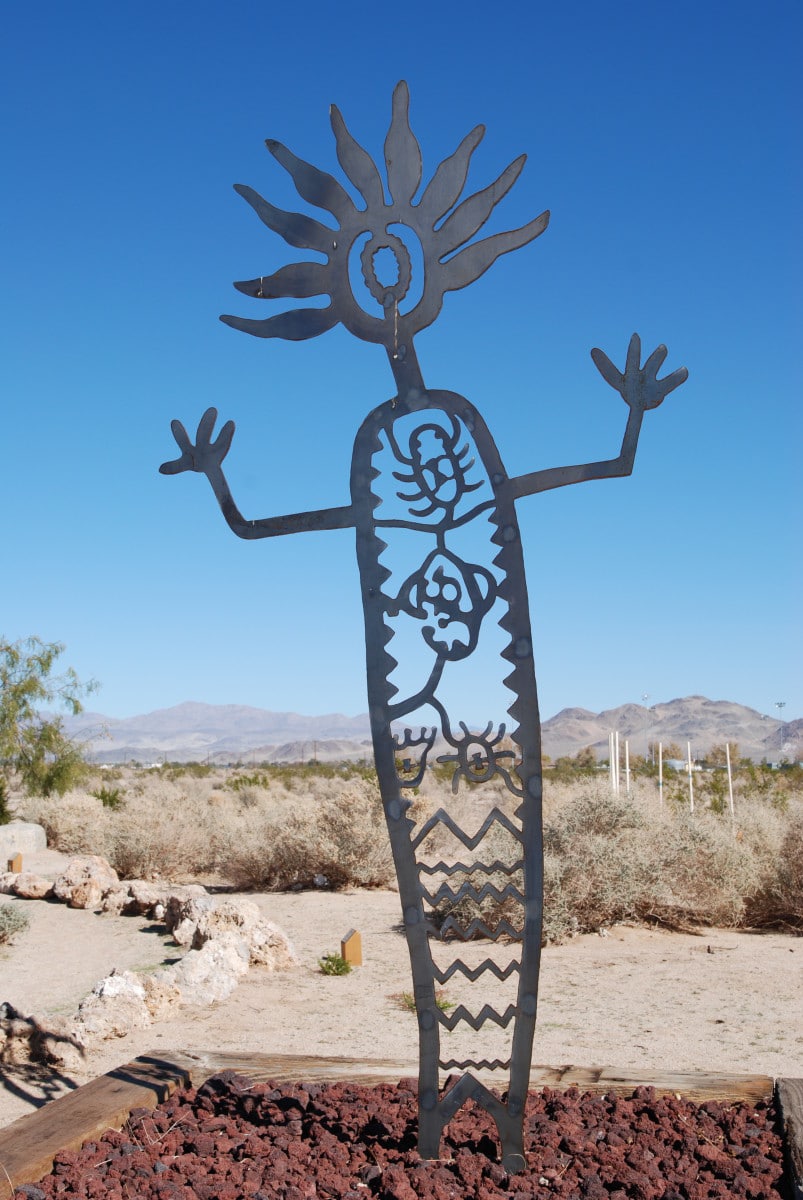
The grounds of the museum feature mature xeriscape landscaping. Throughout the grounds are metal sculptures as well as historic artifacts. There is a demonstration garden, human sundial, and a labyrinth as well as other interesting areas to explore. No matter what the season, the museum grounds are a great place to visit.
Two astronomical domes are located on the grounds and were donated by the Navy at China Lake. They are used by members of the China Lake Astronomical Society to provide educational programs for the community in conjunction with the museum. These amateur astronomers provide telescopes and viewing screens for outdoor evening programs to contribute and share their knowledge and expertise in the areas of astronomy and astrophysics.
Thanks to a grant from the Indian Wells Valley Water District, the museum developed an attractive xeriscape garden of both native and nonnative plants that minimizes water use. Plants are arranged in three mounds depending on their origin. “Low Desert” covers the Colorado and Sonora Deserts of the Southwestern US. “High Desert” contains plants from both the Mojave and Great Basin Deserts of California and the Chihuahuan Desert. The plants from other areas are on the “Desert Adapted” mound. The garden also features the Sue Byrd Fountain that continuously recycles its water and attracts birds and other desert wildlife.
The labyrinth is modeled after the classic seven-circuit design first seen in Crete more than 3500 years ago. Labyrinths differ from mazes in having only a single winding path to the center. The museum labyrinth is made of locally sourced tufa.
Historical artifacts in the museum garden include mining and farming implements. Visiting children love to ring the historic bell that once hung over the Little Lake Hotel. The Historical Society of the Upper Mojave Desert installed the bell on our grounds and donated it to us.
A human sundial is located close to the labyrinth and was designed and built by museum docents and volunteers. You can stand on the current month and your shadow tells the time.
Sculptures are scattered throughout the garden. Large metal shaman and sheep, based on petroglyph designs, were made and donated by Milt Burford. Other shaman were made by Mike Youngblood.
In spring 2016 the desert tortoise habitat was completed with advice from the California Turtle and Tortoise Club. The club put in a drip irrigation system and planted creosote shrubs for cover. Vertical mulching was put in along with burrows and finally the desert tortoises. The 40’x20’ habitat has a brick base with chain-link fence above a lockable gate. It is separated in the middle by a brick wall to keep males and females apart. The facility will be monitored and tortoises moved in and out when necessary, and new plants will be added over time.

